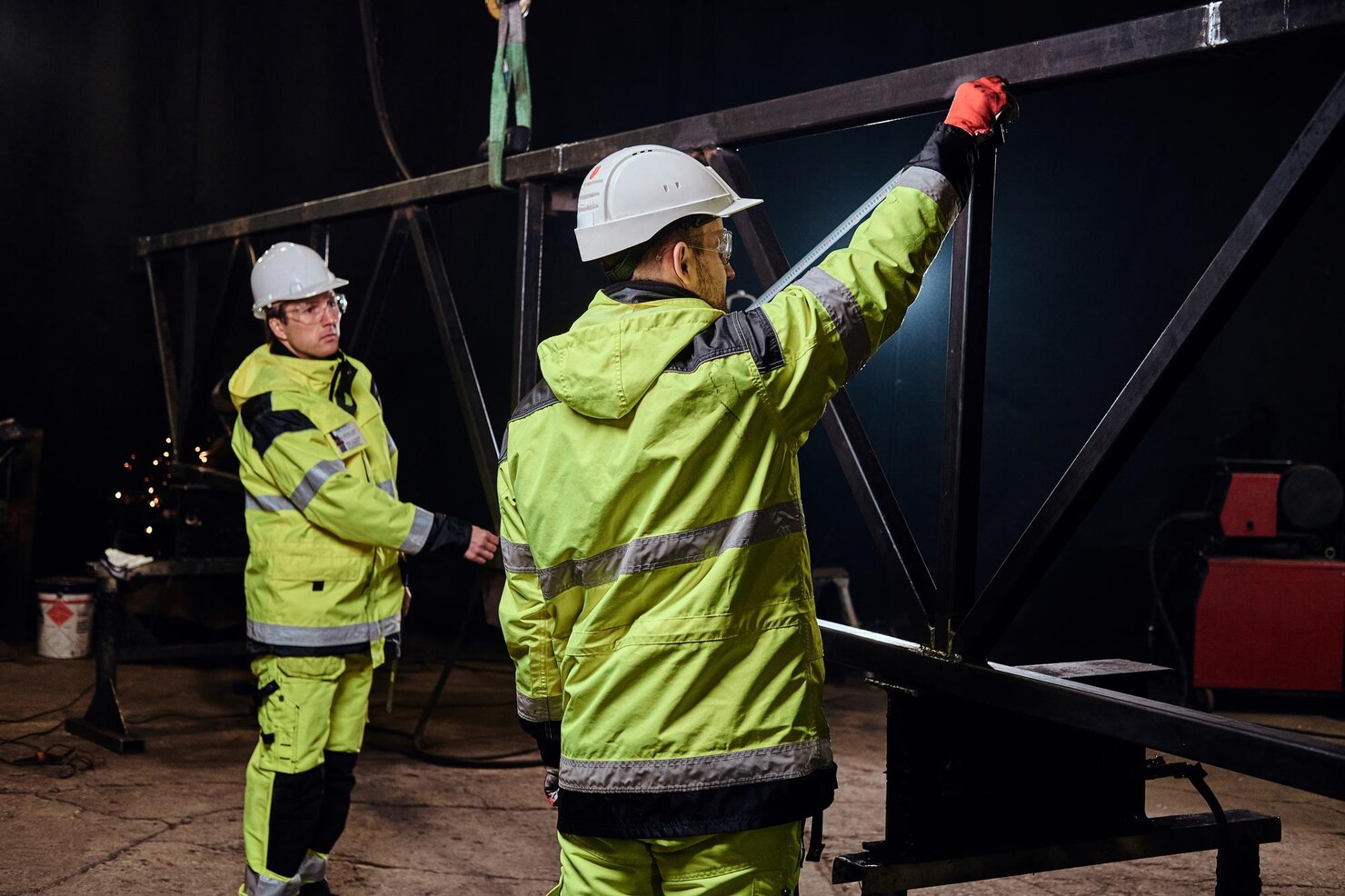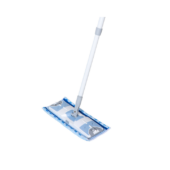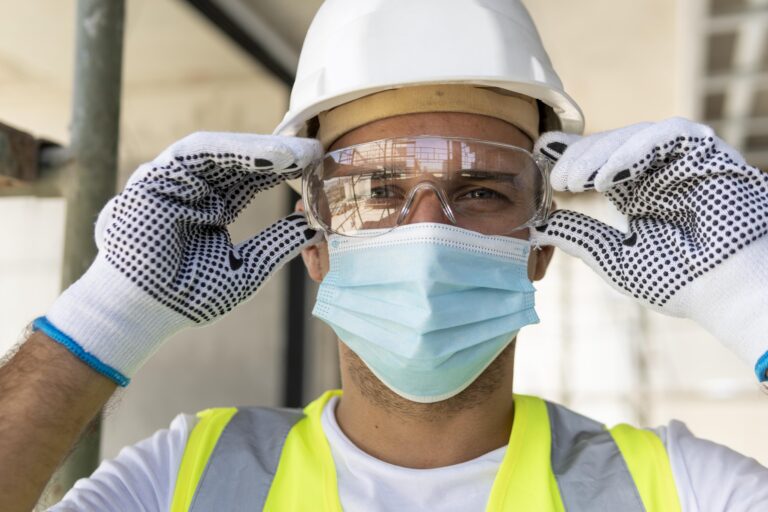Choosing the right hi-vis jacket for construction can be overwhelming with so many options available.
But don’t worry — by the end of this guide, you’ll have all the insights you need to select the perfect jacket for your needs.
We’ll walk you through the most important factors to consider — like safety standards, weather resistance, comfort, and fit — to make sure you’re well-equipped for any conditions on the job site.
Plus, we’ve got solutions for any other workwear concerns you might have down the line, ensuring you’re always ready to tackle the next challenge with confidence.
Key Factors to Consider When Choosing a Hi-Vis Jacket for Construction
1. Safety Compliance
Ensure the hi-vis jacket meets safety standards like EN ISO 20471 for visibility and protection. Construction workers should opt for jackets that provide:
- Class 2 or Class 3 certification, depending on the job’s risk level.
- Reflective strips that enhance visibility in low-light conditions.
- Fluorescent colors like orange, yellow, or red for maximum visibility during the day.
Learn more about EN Standards from this guide in Wikipedia.
2. Weather Resistance
Construction work happens in various weather conditions, so your jacket should be suitable for rain, wind, and cold. Look for features like:
- Waterproofing to keep dry in heavy rain.
- Insulation for warmth in cold environments.
- Ventilation panels for breathability in hot weather.
For all-weather options, explore our range of hi-vis jackets here.
3. Comfort and Fit
A comfortable jacket ensures workers can focus on their tasks. Key factors include:
- Adjustable cuffs, hems, and hoods for a secure fit.
- Lightweight materials for extended wear.
- Size inclusivity, from XS to 4XL, to accommodate all body types.
Use the following sizing chart to select the right fit:
| Chest Size (cm) | Jacket Size |
| 86-94 | S |
| 94-102 | M |
| 102-110 | L |
| 110-118 | XL |
| 118-126 | XXL |
| 126-134 | 3XL |
Types of Hi-Vis Jackets for Construction
Quick Comparison Table
| Jacket Type | Weather Suitability | Compliance Levels | Cost |
| Lightweight Hi-Vis | Warm climates | EN ISO 20471: Class 2 | Affordable |
| Insulated Hi-Vis | Cold environments | EN ISO 20471: Class 3 | Moderate |
| Waterproof Hi-Vis | Rainy conditions | EN ISO 20471: Class 3 | Moderate |
| Multi-Function Hi-Vis | All conditions | EN ISO 20471: Class 2-3 | Higher range |
1. Lightweight Hi-Vis Jackets
Ideal for warmer climates or indoor work, these jackets provide visibility without causing overheating. Look for options with breathable fabrics and mesh panels.
2. Insulated Hi-Vis Jackets
Designed for cold-weather construction, these jackets feature thermal linings to retain heat while maintaining visibility.
3. Waterproof Hi-Vis Jackets
Waterproof jackets provide comfort and visibility even in challenging weather conditions, ensuring workers remain dry and visible. Key features include sealed seams and durable water-repellent coatings.
4. Multi-Function Hi-Vis Jackets
These versatile jackets offer features like detachable sleeves or reversible designs, making them adaptable to various conditions.
Additional Considerations
Durability and Maintenance
Construction environments can be active, so choose jackets made from durable materials like polyester blends. Machine-washable options make maintenance easier.
For enhanced durability, store your jacket in a cool, dry place and avoid excessive exposure to direct sunlight when not in use. Regularly inspect to ensure its reflective properties and performance over time.
Special Features
- Pockets and Tool Holders: Convenient for storing tools and small items.
- Hood Options: Detachable or stowable hoods for versatility.
- Reinforced Seams: For long-term durability.
Complementary Workwear
To maximize safety and comfort, pair your hi-vis jacket with other high-visibility workwear:
- Safety Vests: Lightweight and easy to layer. These are ideal for adding an extra layer of visibility without bulk.
- Hi-Vis Pants: Ensures full-body visibility, especially useful in environments where lower-body movement is critical to safety.
- Hi-Vis Overalls: Provides complete coverage and protection for all-weather scenarios. Overalls are particularly effective in muddy or wet construction sites.
- Cut-Resistant Gloves: Adds hand protection without compromising visibility, perfect for tasks involving sharp tools or materials.
Complementary workwear not only enhances visibility but also ensures that every part of the worker is adequately protected, supporting on-site safety and visibility.
For detailed buying guides on these products, explore related articles such as How To Choose The Right Safety Vests – A Buyer’s Guide and Selecting The Best Hi-Vis Overalls: A Practical Guide.
Conclusion
We hope this guide has been helpful in navigating the key factors for choosing the best hi-vis jackets for construction, from safety compliance to comfort and fit. Whether you’re working in challenging weather conditions or simply need to stay visible on-site, we’re here to support your safety needs every step of the way.
Explore our full range of hi-vis jackets here, or dive deeper into related topics with Hi-Vis Jackets: Selecting The Right Visibility Gear.
Have any questions or need advice on selecting the perfect jacket? Feel free to reach out—we’re always here to help ensure your safety and confidence on every job.
– The Droppe Team
Frequently Asked Questions
Class 2 jackets are suitable for low-risk environments, while Class 3 provides the highest visibility, ideal for high-risk settings.
Yes, but make sure to choose one that is weather-resistant, such as waterproof or insulated options for rain and cold temperatures.
Check the sizing chart based on your chest measurement, and ensure the jacket is snug but allows for comfortable movement.
Most hi-vis jackets made from durable fabrics are machine washable. Always check the care instructions for proper maintenance.
Absolutely! Many hi-vis jackets are designed for versatile use across various industries, providing comfort and safety in different environments.

















